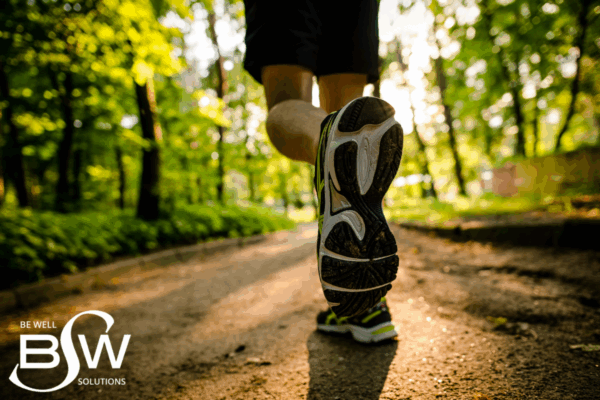Longer daylight hours and warmer, sunny days make workouts more motivating this time of year. However, safely navigating the elements can take more preparation and planning. Follow the tips below to keep your summer exercise sessions safe and rewarding.
Choose the Right Time
Avoid exercising in the heat of the day by scheduling your workouts in the cooler morning or evening hours. The sun’s rays are usually the most intense between 10 am and 4 pm. If you can’t avoid the midday timeslot, aim for areas of high shade or consider activities in water.
Stay Hydrated
Don’t wait until you are thirsty to start drinking water. Hydrate before, during, and after your activity. Proper hydration allows your body to regulate its temperature and cool properly, while dehydration is directly related to heat illness. Bring a water bottle or plan adequate water stops along your route. If your exercise lasts longer than sixty minutes, is in a warmer climate, or higher intensity, or if you are sweating more than usual, you should increase your hydration accordingly or consider an electrolyte replacement.
Dress In Appropriate Attire
Stay cool by wearing light colored and lightweight clothing. Choose moisture-wicking materials to keep skin dry and allow sweat to evaporate. Don’t forget helpful accessories like sunglasses and hats. A brimmed hat can protect your head, face, and neck from the sun.
Talk with Your Doctor
Certain health conditions and medications can increase your risk of heat illness. Talk with your doctors about your risks and discuss any restrictions or guidelines for outdoor exercise. Practice safe habits by including your physician team in your exercise planning process.
Listen to Your Body and Take Breaks
Even the most elite athletes need to take breaks during their exercise sessions. Plan the best spots for a quick rest break before beginning your workout. Consider rest areas with shade, seating, water, and restrooms. Listen to your body and adjust your activity as necessary. You might find that your workout needs to be shorter or less intense to account for the warmer climate.
Wear Sunscreen
Protect your skin during your outdoor workout by wearing sunscreen. A sunburn can impact your body’s ability to regulate its temperature. Apply sunscreen before beginning your exercise and reapply as needed. Choose water and sweat-proof sunscreen to keep you protected throughout your activity.
Know the Signs of Heat-Related Illness
Know the following signs of heat-related illnesses to prevent or quickly treat them. For a more extensive list of heat illness signs and symptoms, visit the American Heart Association’s website1.
Dehydration. Symptoms can range from mild to severe. It can begin with feelings of thirst, dry mouth, and headache. It can escalate with symptoms that include dark colored urine, confusion, and dizziness.
Heat Cramps. Symptoms can be similar to those with dehydration, but can also include muscle cramps, specifically in the lower extremities. Heavy sweating can be present as well.
Heat Exhaustion. The symptoms of heat exhaustion can include headache, dizziness, weakness, nausea, and vomiting.
Heat Stroke. Heat stroke is a severe condition that requires emergency response. During heat stroke, your body cannot regulate temperature. Symptoms of heat stroke include a high fever above 103°F, red skin, fast pulse, shallow breathing, extreme confusion, seizure, and unconsciousness. Call 911 and seek help immediately.
Practice safe summer exercise to avoid heat-related illnesses. At the first sign of dehydration, discontinue activity and take the proper precautions to hydrate and cool down.
Always consult with your physician before starting a new exercise program.
Continue Reading July 2025 Newsletter: Sleepless from Stress? How to Break the Cycle and Sleep Better

